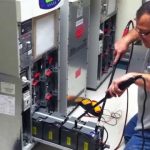Brief Overview:
The “HVAC Maintenance” course focuses on providing technicians with the knowledge and skills necessary to maintain and operate air conditioning and refrigeration systems. The course includes a set of modern methods and best practices to ensure the efficient performance and safety of HVAC systems, which helps improve thermal comfort and energy efficiency in buildings.
Course Objectives:
- Understand the basic principles of refrigeration and air conditioning systems.
- Identify the components of HVAC systems and how they work.
- Gain skills in maintaining and repairing air conditioning and refrigeration systems.
- Learn techniques for diagnosing faults and solving problems effectively.
- Improve energy efficiency and reduce energy consumption in HVAC systems.
Training Content:
- Introduction to refrigeration and air conditioning systems (HVAC).
- Components of the HVAC system (condenser, compressor, evaporator, etc.).
- Air cooling cycle and understanding thermal dynamics.
- Maintenance of air conditioning and refrigeration systems (installation, cleaning, replacement).
- Diagnostic and troubleshooting techniques.
- Energy efficiency in HVAC systems and ways to improve performance.
- Safety in the workplace and handling refrigerants.
- Conducting performance tests and analyzing data.
Target Group:
This course targets technicians and specialists in refrigeration and air conditioning systems, including:
- New technicians and those wishing to develop their skills.
- Engineers and technicians in the fields of air conditioning and refrigeration.
- Supervisors of maintenance teams.
- Students in the fields of engineering and technology related to refrigeration and air conditioning.






